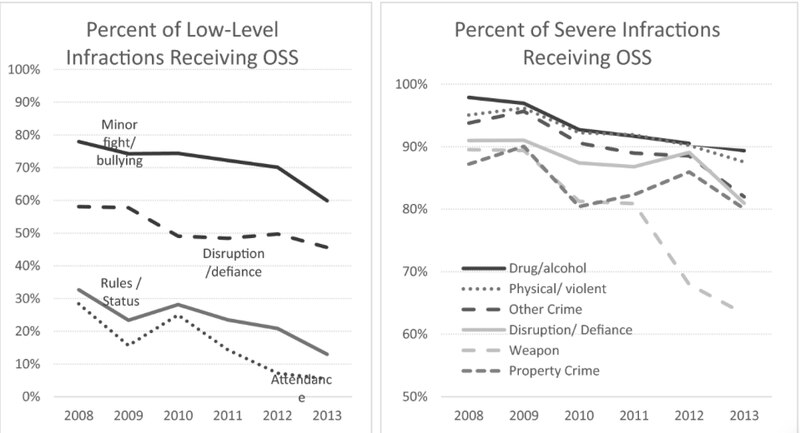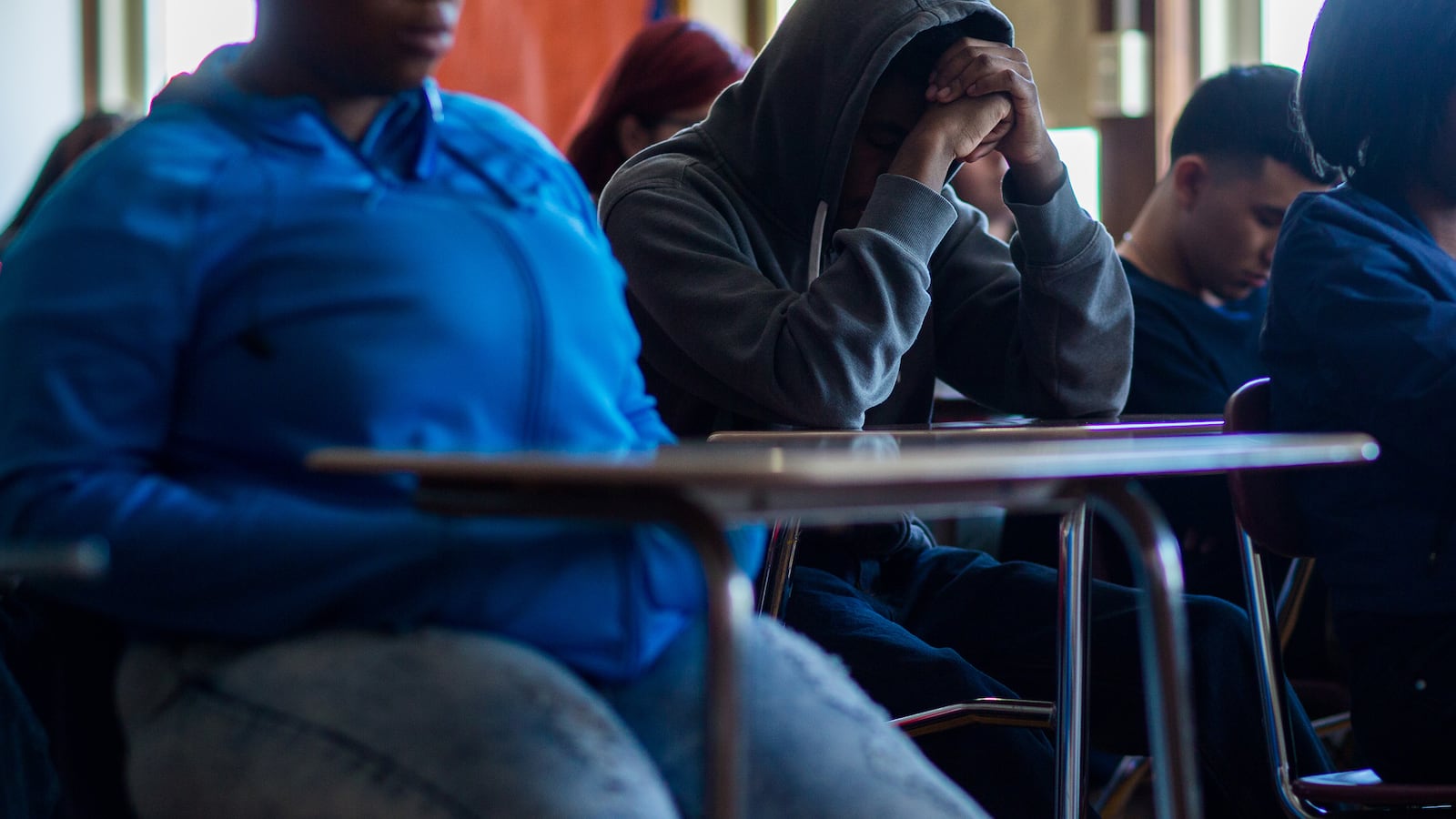As school districts across the country have cut back on suspensions, critics claimed that the changes have led to chaos in the classroom. But there’s been remarkably little hard evidence either for or against that view.
That’s why a new study of Chicago Public Schools is so significant.
It found that a modest drop in suspensions for high-level offenses actually led to small increases in test scores and attendance for all students in a school. The research, recently published in the peer-reviewed Peabody Journal of Education, bolsters the case of discipline reformers who argue that school suspensions are ineffective and disproportionately target students of color.
“Reducing suspension use for severe infractions seems consistent with a set of generally positive but small impacts,” the researchers, Rebecca Hinze-Pifer of Stanford and Lauren Sartain of the University of Chicago, found. There was “no indication students overall experience schools as less safe when suspension use for severe infractions declines.”
Chicago began working to reduce suspensions and other kinds of discipline that pull students out of their classrooms in 2008. Many other cities have followed suit.
By 2013, the share of severe offenses in Chicago schools that resulted in out-of-school suspensions dropped from 93 percent to 84 percent in high schools. The share of lower-level weapons violations, like having a box cutter, resulting in out-of-school suspensions dropped more sharply. Students often earned in-school suspensions instead, keeping them in their school building but not their specific classrooms.
The researchers try to determine the effects of those changes by comparing the same students in the same Chicago high schools before and after the reductions in suspensions for severe offenses.
They found that the school-wide increase in attendance amounted to about one additional day per school year, beyond the extra days students were in school because they weren’t suspended. The test score gains, while statistically significant, were very small.
Although the suspension changes had no overall effect on students’ perceptions of their schools’ safety, that wasn’t true in all schools. In schools that were predominantly African-American (and which also had the highest suspension rates), students felt much safer after the reforms. But in schools with many Latino students, the opposite was true. The researchers couldn’t determine why.
It’s unclear whether these findings would apply to other school districts, particularly because the drop in suspensions in Chicago was fairly small. The initiative took place before the federal government issued guidance in 2014 pushing districts to reduce suspensions. (Current Secretary of Education Betsy DeVos is considering rescinding this guidance.)
But the study does add to the limited knowledge base on how school discipline reforms affect students. A previous study in Chicago found that efforts to shorten suspensions in high schools boosted attendance, but made schools less safe, according to teachers. Another recent study in Philadelphia found that after the district put in place a policy to limit suspensions, student test scores declined in some schools, but since the policy was largely not implemented, the findings are difficult to interpret.
Hinze-Pifer, the researcher behind the latest study, emphasizes that figuring out the best alternatives to suspensions remains essential.
“It does matter what you do instead,” she said. “We’re not saying do nothing.”



